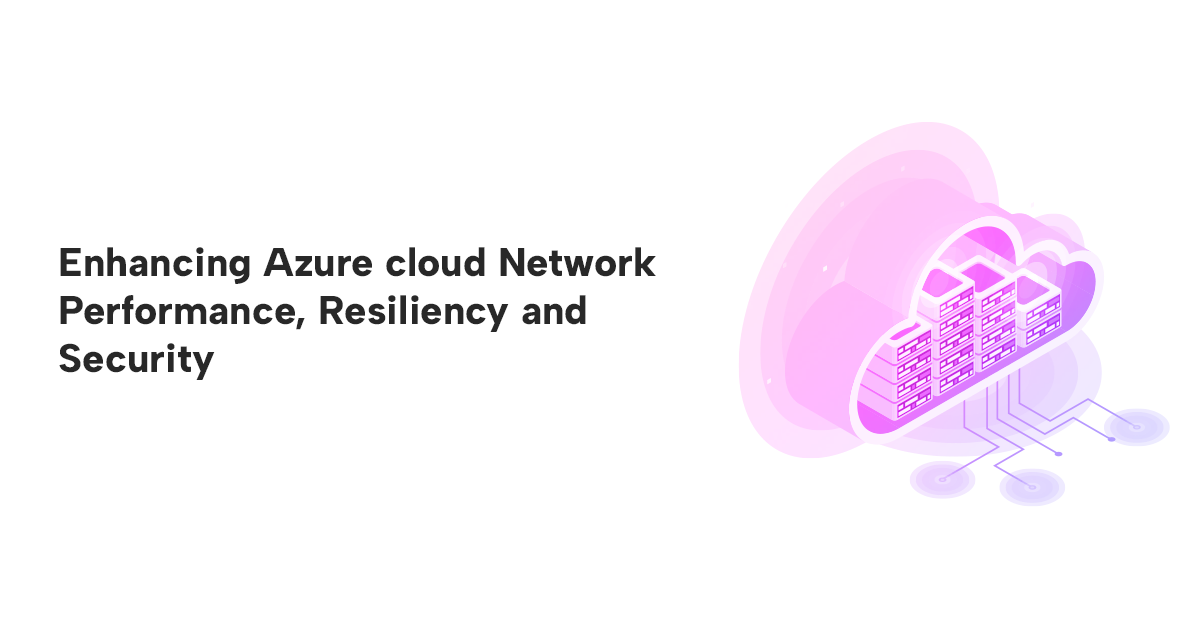Enhancing Azure cloud Network Performance, Resiliency and Security
Mar 01,2024
Introduction
The customer is a leading software company with over 700 skilled professionals. With a global presence in key tech hubs across North America, Europe, and Asia, which brings innovative solutions to the doorstep. Boasting an annual revenue exceeding $150 million, specialize in custom software development, technology consulting, and continuous digital innovation.
Challenges
Customers faced challenges related to network complexity, scalability, and the need for a robust failover solution for its Azure infrastructure.
Network Complexity: The existing Azure network architecture was complex and challenging to manage as the company expansion its cloud services because of distributed and unorganized connectivity.
Hybrid Connectivity: With on-premises resources and a need for consistent and secure connectivity, customer sought a solution that seamlessly integrated on-premises data centers with Azure.
Failover and Redundancy: Ensuring high availability and disaster recovery capabilities were critical for business continuity.
Technology Solutions
Hub-and-Spoke Topology: Deployed a hub-and-spoke topology in Azure cloud, where the hub VNet acts as the central point of connectivity, and spokes VNets represent individual business units or applications.
ExpressRoute for Hybrid Connectivity: Implemented Microsoft Azure ExpressRoute to establish private, dedicated connections between Azure data centers and on-premises locations.
Connected on-premises data centers to the Azure hub VNet via ExpressRoute circuits, ensuring low-latency, high-throughput, and secure connectivity.
VPN for Backup to ExpressRoute: Configured a VPN (Virtual Private Network) connection as a failover solution to provide redundancy in case of any issues with the ExpressRoute connection.
Leveraged Azure VPN Gateway to establish secure site-to-site VPN connections between on-premises locations and the Azure hub VNet.
Network Security: Implemented network security groups (NSGs) and Azure Firewall to control inbound and outbound traffic, ensuring a secure and compliant network environment.
Scalability and Management: Leveraged Azure Virtual WAN for simplified and scalable hub-and-spoke architecture management, allowing customer to easily add new spokes as the business grows.
Implementation Strategy
Define Networking Requirements: Identify business and technical requirements, considering factors such as performance, security, compliance, and scalability. Determine the type of resources that need to communicate within Azure and with on-premises data center.
Design Virtual Network Architecture: Plan the Azure Virtual Network (VNet) architecture, including the segmentation of resources into subnets. Consider implementing a hub-and-spoke topology for centralized network management and improved security.
Address Security Concerns: Configure Network Security Groups (NSGs) to control inbound and outbound traffic, implementing necessary security rules. Consider deploying Azure Firewall or third-party network security appliances for additional protection.
Implement Connectivity: Design resilient and robust connectivity architecture:
- Azure ExpressRoute: A dedicated and private connectivity to Azure from on-premises for high performance and SLA-based throughput.
- Azure VPN Gateway: A secure site-to-site VPN for backup connectivity and remote access VPN connections for enhance remote user experience.
- Configure and validate connectivity, ensuring proper routing and failover mechanisms.
Results and Impact
Simplified Network Management: The hub-and-spoke topology streamlined network management, making it more efficient and scalable for the customer.
Enhanced Connectivity: ExpressRoute provided a dedicated and secure connection between on-premises data centers and Azure, improving data transfer speeds and reliability.
Failover Capability: The VPN failover solution ensured business continuity by providing an alternative connectivity path in case of issues with the primary ExpressRoute connection.
Improved Security: Network security measures, including NSGs and Azure Firewall, enhanced the overall security posture of customer Azure environment.
Conclusion
The re-architecture of Azure networking for customers successfully addressed the challenges related to complexity, connectivity, and failover. The hub-and-spoke topology, combined with ExpressRoute for primary connectivity and VPN as a failover solution, provided a robust, scalable, and secure network infrastructure. This strategic implementation positions customer for continued growth and resilience in the competitive cloud services market.




